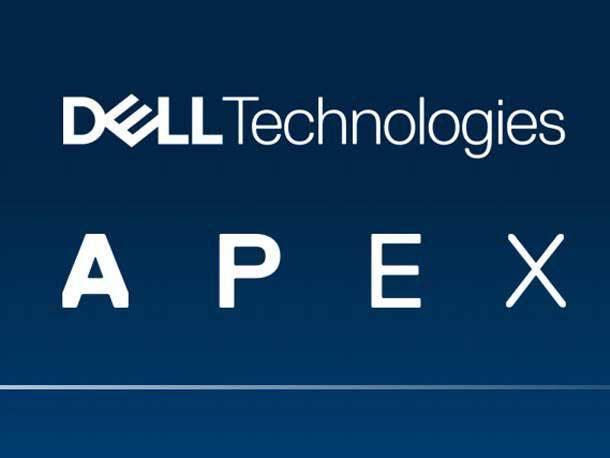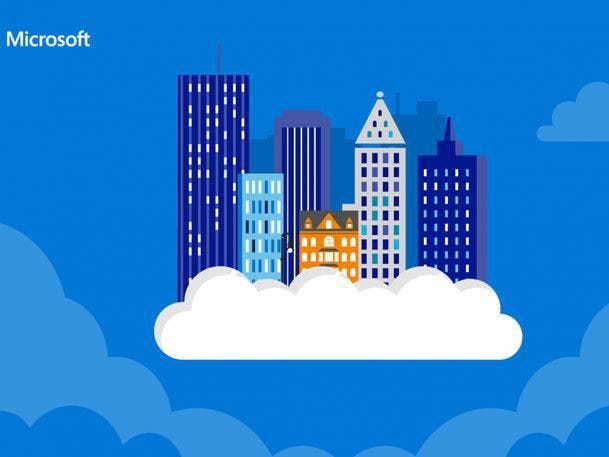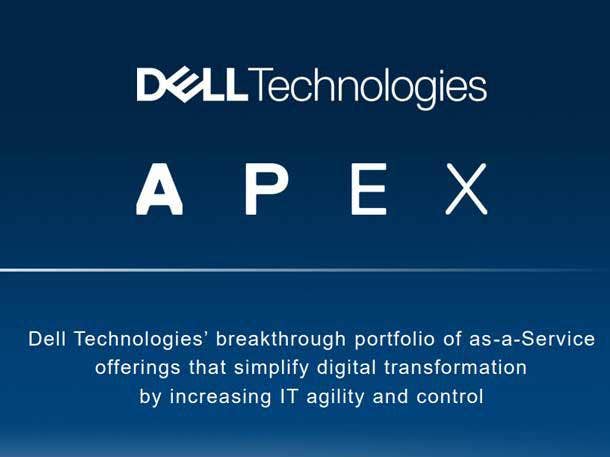Dell Apex Cloud Platform For Microsoft Azure Aims To Simplify Hybrid Deployments
‘Some workloads make more sense to be on-premise, while other workloads are better-suited to a cloud architecture. Regardless, the user-experience should remain the same and that’s what Dell’s Apex Cloud for Azure brings to the table. IT teams are able to become much more strategic, while user-impact is completely mitigated regardless of where the workload sits,’ VirtuIT Systems CEO Gary McConnell tells CRN.

Every customer’s approach to cloud is different, a complexity that forces the solution provider meet the talent and certification requirements the job demands, which can vastly increase costs, said Gary McConnell, CEO of VirtuIT Systems, a Dell Platinum Partner.
“Some workloads make more sense to be on-premise, while other workloads are better-suited to a cloud architecture. Regardless, the user-experience should remain the same and that’s what Dell’s Apex Cloud for Azure brings to the table,” he said.
Inside Dell’s latest venture with Microsoft, announced this week, the Dell Apex Cloud Platform Foundation Software integrates with Microsoft Windows Admin Center and the Azure Portal, giving solution providers a common, centralized user experience to manage deployments.
[RELATED: Dell Names Jeff Boudreau Chief AI Officer, Creates AI Business Unit: Exclusive]
“This is just taking a known set of actions across one stack, clicking a button, and now you have the same feature and visibility on the other stack,” McConnell said. “If you’re a Microsoft Engineer that’s hung up on a piece of the Apex platform, you have access to the Dell ProSupport suite, so there’s no need to have to hire a bunch of Dell skillsets in-house to do it for you ... IT teams are able to become much more strategic, while user-impact is completely mitigated regardless of where the workload sits.”
The integration announcement this week is part of the “cloud-to-ground” strategy that the company announced at Dell Technologies World in May, Cheryl Cook, senior vice president global channel, told CRN.
“If you’re a partner who’s helping customers navigate where to deploy their workloads, it dramatically simplifies and offers a consistent operational and orchestration experience for the partner to deploy, whether it’s in public cloud, or on-premise on the same Azure stack,” she said.
Later this year, the company will release similar capabilities with Red Hat. The goal of each integration is to drive consistency across the IT environment using common hardware platforms built on PowerEdge technology, common software built on PowerFlex technology, and common automated management and orchestration for that entire stack.
“It’s a tremendous opportunity of extending partners capabilities, opening the aperture for their services opportunity, and, candidly, modernizing the way with which IT is deployed and allowing us to together meet our customers where they are,” Cook said.
Leading the project is Sudhir Srinivasan, senior vice president of multi-cloud and data solutions and CTO emeritus at Dell Technologies. He said Dell’s engineering team remains deeply engaged with Microsoft’s own team working on upcoming features.
“A huge part of the value proposition here is the level of engineering... we’ve been operating as almost a single engineering team. There’s a very tight level of collaboration between the two,” he said. “It has taken our relationship, and our partnership, to the next level.”
Srinivasan said every feature of Dell Apex Cloud for Microsoft Azure has been repeatedly validated by engineers from both companies as part of its first Premier Solutions for Microsoft Azure Stack HCI. The new category in the Azure Stack HCI catalog is reserved for Microsoft’s technology partners with the deepest integrations into Microsoft’s management tools.
“Both Dell and Microsoft have jointly tested it,” he said. “We know that it will work well and will upgrade well and you will not have issues.”
For McConnell, however, the product isn’t necessarily a game-changer. “I’d more so call it the continuous development of watching AI and automation playout into real life use-cases rather than just buzz-terms,” he told CRN.
Here is CRN’s interview with Cook and Srinivasan edited for length and clarity.

Cheryl, I know Dell has mentioned this product before, but this collaboration with Microsoft seems like a big win for partners. What’s the opportunity for them?
Cook: No, absolutely. And I’m just delighted to see us continuing to bring to market all the announcements we made in May at Dell Technologies World in Las Vegas. We have a lot of partners that have strong partnerships with Microsoft and I think this is just going to be an absolute fabulous opportunity for them to really engage and help simplify, accelerate, and help customers that are really working on deploying their hybrid Azure clouds.
Sudhir, can you talk about how this solves for some of the challenges in the IT environment that partners are working in right now?
Srinivasan: It’s very clear, now, in the industry that the world is hybrid. I think it’s also becoming clear now that it’s multicloud so what we see is a lot of our customers, most of them, in fact, are still struggling to get hybrid cloud right, let alone deal with the complexities of multicloud.
What customers really want to focus on is their workloads, their business applications and satisfying those needs, versus spending a lot of time and energy on getting the infrastructure going.
So Dell Apex cloud platform for Microsoft Azure, that’s targeting precisely that need for customers. And it’s combining Dell’s expertise and leadership, I would say, in delivering turnkey infrastructure, using software driven automation, with Microsoft’s leadership in cloud services. And then actually, our combined leadership and experience over the last several years in delivering hybrid Azure solutions to our customers.

There appears to be a great services play here as well, with some of the stats you call out in the press release, with the 88 percent reduction in deployment steps. It seems like a great way for partners to start a conversation.
Srinivasan: Absolutely. Just like for our customers, it elevates them to focus on the things that matter. It does that for partners too. They can focus on delivering value and services as opposed to just the delivery of the platform itself.
Cook: I also think this is just another good expression of Dell leaning into strong partnerships like we have with Microsoft. I mean, the two companies have worked so closely together for so long and it’s just a great expression of just the deep collaboration and engineering together whereby we can leverage our Dell Apex cloud platform foundation software, with their Azure technology stack.
For partners, they’ve got the expertise and capability now in both, and they’re able to deliver a much more accelerated deployment, with simplified management and orchestration and operational efficiency. Essentially, we’re meeting our customers where they are and in this world of hybrid, it’s leveraging the best of both.
And, certainly there is the services opportunity it represents for our go to market partners.

Looking at it from an MSP perspective, the way this addresses patching, which is a huge issue in any system, and especially in these highly complex environments, it seems as though if they use this they’ll be able to say to their customer, ‘If you go with us, your system is always going to be up to date.’ That’s how I’m reading it. Is that right?
Srinivasan: You’re absolutely right. And I think that’s a huge part of the value proposition here is the level of engineering. So I lead the engineering team that’s been working with the Microsoft engineering team. In fact, my team right now, today as we speak, is in Redmond working on feature releases that we’re making together. That’s how we’ve been operating as almost a single engineering team.
There’s a very tight level of collaboration between the two. It has taken our relationship, and our partnership to the next level. And in the data point that you called out, which is being able to get the latest software updates automatically from when Microsoft releases them within a few hours. It’s not just that you get the updates, but you get the updates, because both Dell and Microsoft have jointly tested it. We know that it will work well and will upgrade well and you will not have issues.

Can I ask you about that? I just I’d love to kind of dig into that a little bit. How big a priority was it to get that right so just so you can say, ‘Look, your lives are gonna get a lot easier if you go with us.’
Srinivasan: I would say it’s a defining principle for this class or product. We’ve had a product like that in the past as you might know, and so we’re taking that learning from the on-prem world of delivering on-prem software infrastructure in this way, and now we’re bringing it to the hybrid-cloud world.
So it was a a day one principle that we must have this, because that’s where we saw the value for our customers. It’s actually captured in the fact that Microsoft also recognizes that and has created a new category of solutions called the premier solutions. That’s a new category that they’ve created to signify this level of maturity, of integration or the level of support and patching. The fact that Dell customers get a single support interface with Dell to this process.
I’d say I think I would say it in terms of the sort of the use case of what this enables for our customers. The big things is the modernization of applications, right? Right. Customers are still on the journey of modernization. And this brings the cloud modern stack to them where they want it. And so now we can develop their applications wherever they want. Whether it’s in the public cloud or on prem, that fluidity is is going on, like their journey to this modernized world. So I see this as a platform, which is why , we call it as a platform because it really is the new way of doing it. For them.